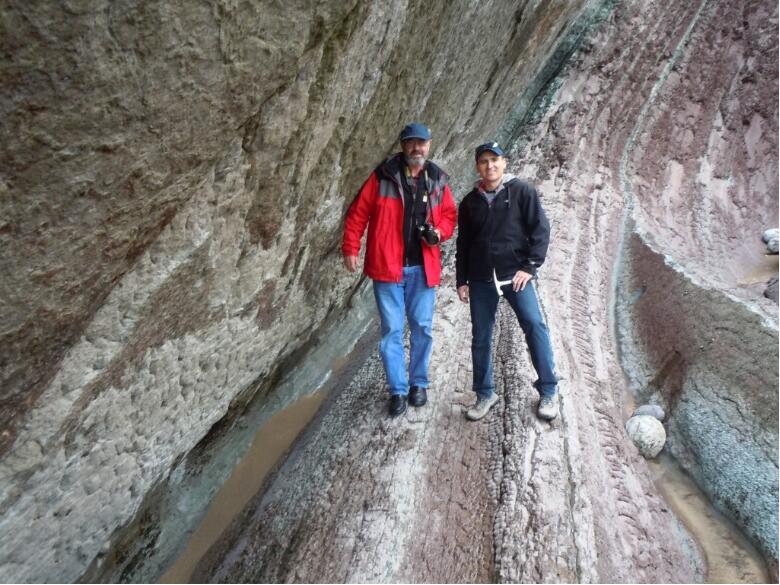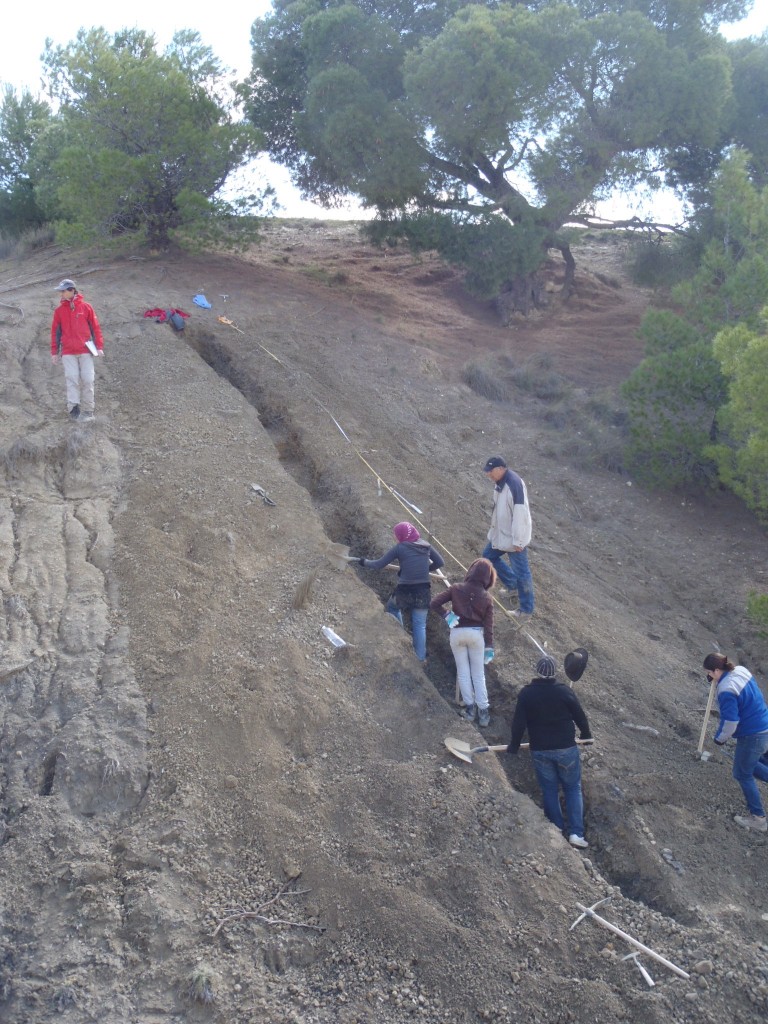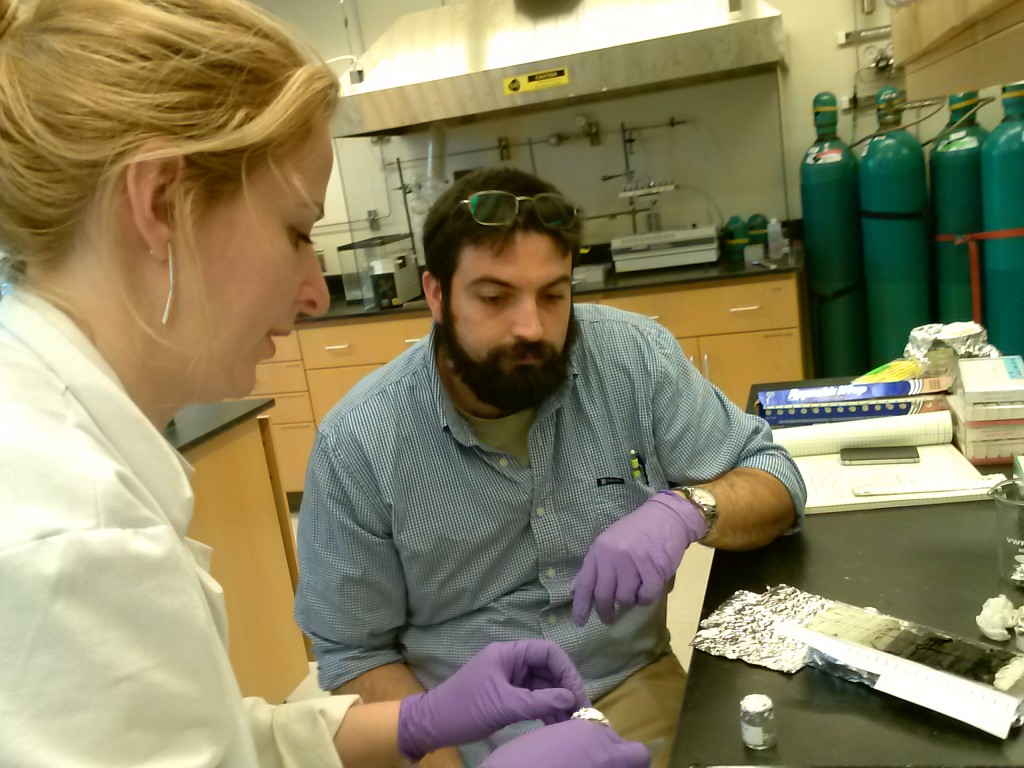The Summons lab investigates the relationships between extreme environmental change (like greenhouse climates and impact events), global biogeochemical cycles, and biology across major events in Earth history. We address these interactions by analyzing the biomarker and isotopic signatures of marine microorganisms preserved in ancient rocks and sediments, which allow us to reconstruct many aspects of changing environments and biology: ocean temperature, redox conditions, marine productivity, ecological successions of planktonic organisms, carbon and nitrogen cycling, hydrology, and terrestrial inputs to the marine realm.
 Professor Roger Summons and Dr. Julio Sepúlveda at the Cretaceous-Paleogene (K-Pg) boundary in Zumaia, Spain.
Professor Roger Summons and Dr. Julio Sepúlveda at the Cretaceous-Paleogene (K-Pg) boundary in Zumaia, Spain.
Photo credit: Dr. Julio Sepúlveda
Currently, members of our group are studying mass extinction events across the Permian-Triassic (P-T), Triassic-Jurassic (T-J), and Cretaceous-Paleogene (K-Pg) boundaries, as well as oceanic anoxic events (OAEs) during the Jurassic and Cretaceous, and the Paleocene-Eocene Thermal maximum (PETM).
Work on the K-Pg is being conducted in collaboration with the team studying samples obtained by IODP drilling of the Chicxulub impact crater.
This project is funded by the International Ocean Discovery Program (IODP) and the International Continental Scientific Drilling Program. It has also been supported by the Australian Research Council (ARC) $10 million infrastructure program led by Australia-New Zealand IODP Consortium.
Members of the Summons Lab are also studying samples acquired on ODP Leg 207 to the Demerara Rise where Cretaceous through Paleogene marine sediments are recorded. We are specifically looking at OAE2 with a focus on sulfur cycling using Quadruple Sulfur Isotope systematics and molecular fossils for sulfur cycling microbes.

Members of the Summons Lab and local colleagues sampling the Global Boundary Stratotype Section and Point (GSSP) for the Cretaceous-Paleogene (K-Pg) boundary at El Kef, Tunisia.
Photo credit: Dr. Julio Sepúlveda
Collaborators Professor Jessica Whiteside (NOC Southampton, UK) and Dr. Morgan Schaller (Rutgers University) sampling a sediment core from IODP Expedition 342 across the Cenomanian-Turonian boundary (OAE-2).
Photo credit: Dr. Julio Sepúlveda
[/one_half_last]
References
- Cao, C., Love, G.D., Hays, L.E., Wang, W., Shen, S., Summons, R.E., 2009. Biogeochemical evidence for euxinic oceans and ecological disturbance presaging the end-Permian mass extinction event. Earth and Planetary Science Letters 281, 188–201.
- French, K.L., Tosca, N.J., Cao, C., Summons, R.E., 2012. Diagenetic and detrital origin of moretane anomalies through the Permian–Triassic boundary. Geochimica et Cosmochimica Acta 84, 104–125.
- Sepúlveda, J., Wendler, J., Leider, A., Kuss, H.-J., Summons, R.E., Hinrichs, K.-U., 2009. Molecular isotopic evidence of environmental and ecological changes across the Cenomanian–Turonian boundary in the Levant Platform of central Jordan. Organic Geochemistry 40, 553–568.
- Sepúlveda, J., Wendler, J.E., Summons, R.E., Hinrichs, K.U., 2009. Rapid Resurgence of Marine Productivity After the Cretaceous-Paleogene Mass Extinction. Science 326, 129–132.
Funding sources
NASA Exobiology Program, NASA Astrobiology Institute (Awards NNX09AM88G and NNA08CN84A), National Science Foundation (EAR 1147402 JHW and EAR 1147685 to RES), MISTI program at MIT.



